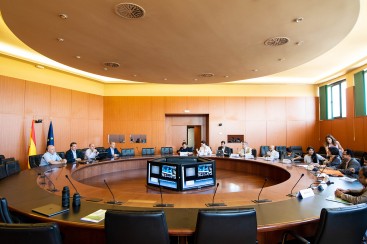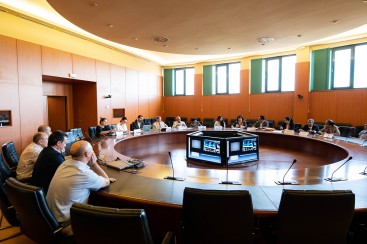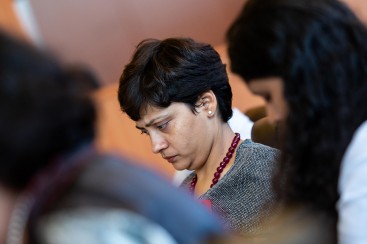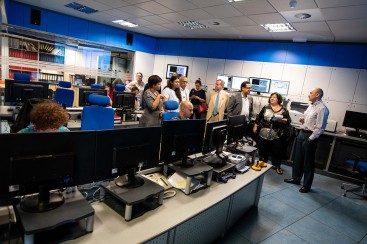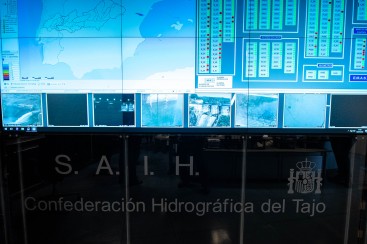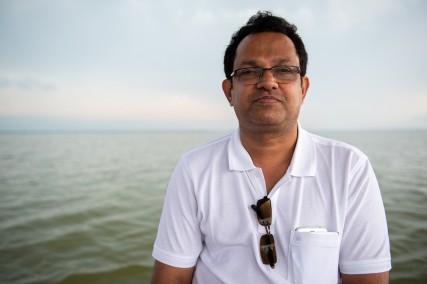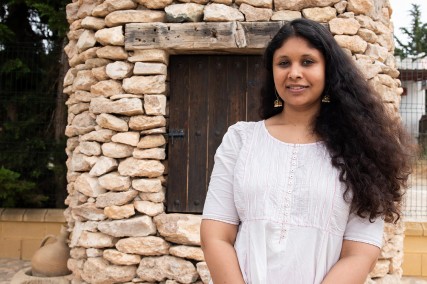Founded in 1953, the Tagus River Authority (Confederación Hidrográfica del Tajo) is one of the institutions through which the Government exercises water management in basins that run through more than one region. Its Chairman, Juan Carlos de Cea, welcomed the Leaders together with the person in charge of the Automated Water Information System (SAIH), José Antonio Hinojal.
The Tagus River Authority is managed in accordance with Spain’s Water Act (Ley de Aguas) which, according to Juan Carlos de Cea, is “the oldest in Europe.” This Authority manages an area “which covers approximately 10% of Spain’s surface area” and runs through several regions on to neighbouring Portugal, which entails a number of obligations to that country. It also includes the city of Madrid, with over 6.5 million people and a similar number of visitors every year: “We have to cater for a large population, as well as purifying water.”
Apart from water supply and treatment, safety is one of the main concerns of the Tagus River Authority. One aspect of safety is cybersecurity, and another is the safety management undertaken at dams through risk analysis: “Investments in dam safety are always massive; the resource is limited and these investments aim to be as efficient as possible.”
José Antonio Hinojal also mentioned the pressure that stems from the need for irrigation, with some 230,000 ha between private and state-owned land: “That is one of the most significant demands in terms of water consumption, and the needs cannot always be met.” Due to climate change, among other factors, flows into reservoirs at the top of the basin have been reduced.
One of the tools to manage contingencies is the Automated Water Information System (SAIH), which was first implemented in Spain in the 80s after the Tous dam disaster. The SAIH for the Tajo basin has “over three thousand sensors generating information that is transmitted to the control centre in real time: rain and snow gauges, dam control systems, canals, lifting stations, water level controls on bridges and so on.”
The SAIH system cost 42 million euros to implement and 2.5 million a year in maintenance, including personnel, parts, communications and repairs.
The management of all this data allows for a large number of studies and feeds the Decision Support System (SAD), which combines the data with weather forecasts to generate probability forecasts for two, six and ten days. These serve as an indicator to discharge water before a flash flood, for example, among other measures.
The system is different from the one used in India, as explained by Dinesh Kumar and Nidhi Srivastava: “We make forecasts at a specific point upstream, one or two hundred kilometres away, between six and ten hours in advance. Forecasts are 99% accurate,” so the main issue according to Nidhi Srivastava lies in “the transmission of data and coordination.” The system used by the Tagus River Authority, stated José Antonio Hinojal, allows for “forecasts to be obtained at all points of the basin.”
The Leaders also visited the SAIH’s Control Centre, which is operational 24/7 and monitors data in real time, as well as one of the Authority’s water stations.
Meeting with iPresas
Later on, Adrián Morales, Technical Director of iPresas, gave the Leaders an overview of his company and the work it does. iPresas is a spinoff of Universidad Politécnica de Valencia which specialises in providing integrated safety and protection to dams and other critical infrastructure. The company acts as a consultancy firm for companies and authorities all over the world, including India, where it recently drafted a document for the Central Water Commission - set to be released at the end of the year - and carried out a risk analysis for the Bhadra dam in the state of Karnataka, one of the country’s largest facilities.
iPresas undertakes full risk analysis, which includes from structural safety to technical documentation and emergency plans, and combined with water data these analyses determine the probability of failures and the potential consequences, as well as the measures needed to reduce this probability. The Leaders were interested in the iPresas’ work and wanted to learn more about the company’s activity. Shri R. K. Gupta enquired about the possibility of carrying out risk studies before building reservoirs, which would allow for changes in their design. Dinesh Kumar asked about the possibility of creating a detailed risk map for all the country’s reservoirs to determine those in which it might be a good idea to carry out a more comprehensive risk analysis.
Adrián Morales mentioned that a similar process was implemented for the Duero River Authority, for which iPresas analysed 27 dams with the purpose of identifying the best candidates for more thorough research. The meeting came to an end with both parties committing to meeting up in the future to identify potential areas for cooperation.
Report: 6th Indian Leaders Programme 2018






